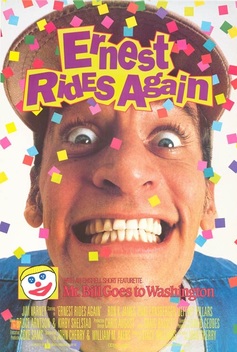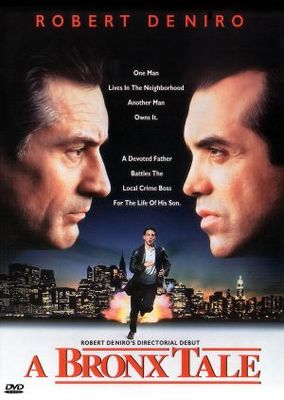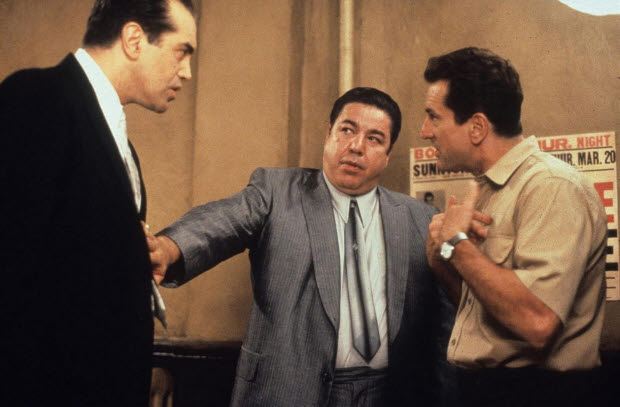So far the films and TV specials with Ernest aren't as bad as I thought they would be. They're stupid, and very cheesy, but they aren't god-awfully annoying or dull either. The only one that I can think of that was very close to being down-right awful was his first TV Special involving his family album for how offensive it was, but at least the first two skits were tons of fun (not to mention that the Billy Boogie segment has a groovy soundtrack). Aside from that, the rest I found to be enjoyable for Jim Varney's charisma, the set-ups, the wacky ways of capturing Ernest's world and style of humor, and a few of the film's occasionally offering moments of sadness, darkness, and heartwarming joy (elements I wouldn't expect to see in any of these films). Now I'm taking a look at the last Ernest film that was released theatrically before the character would appear in straight-to-video films, which was...

Just judging the film by the title and cover alone, it's without question the worst cover for any of the Ernest films for how boring it looks and sounds. All the covers to the Ernest films told you what was going to happen to our beloved childish redneck through their titles and the wild imagery of the character in distinct locations, whether it would be him hanging onto a Christmas tree in "Ernest Saves Christmas" or escaping from prison in front of a guard in "Ernest Goes to Jail". The cover of this film tells me nothing of what's in store for him. It's just him smiling with the title "Ernest Rides Again" in front of his forehead as confetti falls. Is he entering a race, is he going to the party of his life, what is there to attract young audiences other than it's another Ernest film because that seems what the title and picture only suggest. The short film "Mr. Bill Goes to Washington" that's attached to the cover, tells me more about the film than the feature presentation. I know I shouldn't judge a film by its cover, and maybe the film will be as enjoyable as the others, but given its cover, the previous Ernest film losing a little bit of steam, and this being the last of the theatrical films in the franchise, the signs aren't good.
So what's the plot, what kind of misadventure is our pal Ernest going to get himself into this time? Well upon finding an old metal plate at a construction site, Ernest brings it to a Doctor he knows at a college with the last name Melon (Ron James), who believes its part of a giant lost cannon from the "Revolutionary War" called "Goliath" that contains the real Crown Jewels of England hidden inside. The two embark on an adventure to find the lost cannon, and eventually find it, only to have multiple people chase after the two for it. Melon's colleague Dr. Glencliff (Tom Butler) wants to place it in his collection of rare historic antiques; Britain's secret service want to take the jewels back to England where they belong; and Doctor Melon's wife Nan (Linda Kash) with the help of two vacuum cleaner salesmen want to get rich quick by selling the jewels.
From the start of this review, I've stated that there wasn't one Ernest film or TV Special that didn't offer something worthwhile within these mindless films which had me pleasantly surprised (judging by the standards of these movies). This film gave me exactly what I expected to get when reviewing the series from the very start, an unamusing obnoxious experience. Jim Varney (god bless him) is still full of life who is doing everything he can to make the film work, but he's not given much to really work with. And that's odd for me to say because the film does attempt to give him a friendship with the character Dr. Melon that plays out similar like a buddy-comedy, a concept that wasn't given to the character since "Ernest Goes to Camp". But unlike how Ernest's ambitions to befriend the kids and achieve his dream was always felt, here it feels like an after-thought for how generic it is, as Ernest's attempt to befriend him feel phoned-in with the miserable aid of corny music to signal us to have an emotional reaction.

The film clearly just wants Varney to do his usual shtick without challenging him, which at this point is getting kind of old and more annoying. This may have to do with a few things. The first few being the film's look and environment. In every previous Ernest film and TV special there were distinctive settings and themes that Varney was given to play around with, whether it would be locations like a summer camp, Jail, "Splash Mountain", or the film's being holiday themed. In this film, Ernest is pretty much just walking through the woods, to an abandon construction site, getting into trouble at a college campus, and riding a cannon on the open road. This may sound interesting on paper but comes off as rather colorless in execution. That's most likely because the film isn't all that fun to look at. When I think back at the visuals to the other Ernest films, I think of them looking exaggerated and drenched with colors that would at times pop-out at you to provide the right atmosphere and tone when gazing at Ernest's world that's almost as cartoony as he is. This film is by far the ugliest looking one in these films for how grey and dirty it appears, with toned down colors and less amusing locations. Alright, the set-piece for the room where Dr. Glencliff stores his historical antiques is pretty neat, and this random party that Ernest literally crashes seems festive, but aside from that, the depiction of Ernest's world looks like trash.
Considering that the film's look isn't as exploited as the film's before it, and is relying on a premise that's not all that intriguing, this means the bad jokes and unappealing characters are going to stand out even more now that Varney doesn't have the proper support where his expressions and energy isn't going to be enough to save the film. The Ernest films after he went to Camp, though weren't funny still made their gags as bizarrely overblown as possible, resulting with them being entertaining and leading to a couple of laughs for how out of the norm they were. This film takes its comedy back to the stages of "Ernest Goes to Camp" where it plays little on the surreal, and just on cartoony slapstick that's very run-of-the-mill. Most of the sound effects used for the abuse that Ernest goes through clearly sound added-in for how cheesy and cartoony they sound. And many of the moments of Ernest getting hurt or is in some kind of trouble looks staged for the cheap effects, lack of weight, and not looking like he's in any real pain, making it obvious that Varney is just mugging in front of the camera hoping that post-production will edit his scenes nicely together where they'll be funny and believable. The film's humor even contains a decent amount gags where anyone can predict that Ernest is going to ruin things from the moment when someone's told to be careful with a rare book or a new car, which doesn't have a funny pay-off. Some jokes even overstay their welcome, most noticeably the whole sequence with Ernest riding on top of a moving cannon. It pretty much takes up at least 20 minutes of the movie and drags on for so long at such a slow pace with jokes that are incredibly weak and the destruction it causes having very little impact, that I started to find myself questioning how this cannon is still rolling at this point as I was praying for it to stop. It's a painfully long sequence but not as painful as watching Ernest talking to himself as he mimics different voices to make it seem like he's speaking to more than one person. Varney's timing and skill of playing more than one character has been done better in the other Ernest films, for fitting a hilarious set-up of a soldier trying to fool an army of Native American that an empty fort is filled with troops, or working with the odd nature of "Ernest Scared Stupid" by having him change his entire appearance with the help of crazy lighting to fit the tone. But here he doesn't interact with anyone as he mimics different voices nor alters his looks to fit the character he's pretending to be, which makes these child-like moments of a grown-man playing pretend to be creepy, as opposed to charming or funny.
If I said that the film's humor is entirely tasteless than I would be a big liar because the film does offer a couple of moments that are funny or stand-out on the same appeal as dumb-fun entertainment as the previous films after "Ernest Goes to Camp". Some of the lines that Ernest gets provide a few good giggles, his funniest is how he breaks the fourth wall after an accident stating how he would've been dead if he weren't so close to being an actual cartoon character (which begs the question, why we should fear for him being killed or severely injured at all since he survives the impossible). There's a bit when he disguises himself as his Aunt Nelda character that's less awkward than his other scenes of him pretending because he's interacting with another person in order for him to escape from being abducted. And the bit when Ernest is chased by an old angry farmer after borrowing his tractor gives a big laugh from Varney's casual delivery and the expressions and movements from the actor playing the farmer. It's too bad that these bits and a few of Ernest's best lines are very short and far apart. The film's only true highlight that looks as zany as the other films, doesn't feel short-lived, and constantly throws enjoyable gags at you is the opening credits. The opening credits to the Ernest films (after "Camp") have always been one of the strong points in these films to get you in the right mood before the story unfolds, and the credits here are certainly no exception. Throughout the credits, we see old illustrations of Ernest interacting in historical events as the images would occasionally move through an animation style similar to Monty Python. The gags are fun enough, but it's the film's theme song "There Once Was a Man Named Worrell" that makes it stand-out for how ridiculously big and triumphant it sounds, coming complete with a sing-along. It's a song that gives this loony character so much respect and dignity through such wonderful exaggeration that honestly it should be the theme song to all of his films. This intro had me so pumped to see what was in store that little did I know the film had already outdid itself.
It's rare for Ernest films to have characters who stand-out as much as he does. Some have carried his sentimental charm like Santa in "Ernest Saves Christmas", and Eartha Kitt managed to be as delightfully kooky as her star in "Ernest Scared Stupid", but usually they were either incredibly bland, or annoying to the point where they come across as poor imitations of the Ernest character. And just like the entire supporting cast in "Ernest Goes to Camp", there's not a single character or performance present who comes across as anything special. The relationship that Ernest has with Dr. Melon takes every predictable route that are seen in buddy comedies. Abner can't stand Ernest and wants to distance himself from him until fate brings them on a conquest together where they start to get close until a misunderstanding splits them up for a little while before they get back together in the climax. As much as Varney tries to make it work, Ron James’ wooden performance as this bumbling scientist doesn't mesh well with Varney's stale performance. The characters maybe bland in "Ernest Goes to Camp" but at least the performances had enough heart to bring some kind of emotional connection. This character is also given an arc of manning up, and even that feels as emotionally lacking as the relationship that he shares with the protagonist. When he starts punching people and kissing his wife as he's doing a terrible Elvis impression to sound cool and tough, he still feels like a weak dweeb. Most of the other characters in the cast all seem just there leaving no impression, except for the two salesmen. The fat and skinny duo who are usually seen in these films are both recasted with actors that have good timing for how quick they are to finish each other’s sentences, until it becomes tiresome after 5 minutes and starts to become irritating for how they never take a break from their shtick with jokes that aren't funny enough to overlook it.
It's no wonder why the rest of the Ernest films were made for home video after this film, because with the exception of the opening credits sequence there's nothing in it that's worth seeing. Jim Varney's performance is getting stale at this point; the supporting characters are all forgettable; the film's environment is very unappealing; and there are so little good jokes in this film that it's not worth your time to watch the film to see the good ones. Instead of this film moving the series forward by offering something unique enough to make the experience joyfully entertaining if not funny, this film decides to move backwards to the character's beginnings in the film series just minus the heart, charm, and color. If this were a stand-alone movie that wasn't part of the franchise, I wouldn't have wasted my time reviewing it for how boringly safe and unfunny it is. There's nothing in it that's offensive, it just exists to simply cash-in on the character with no style or substance.
This review wouldn't be complete if I didn't cover the short film preceding the main film...

I've been familiar with the Mr. Bill character growing-up as a kid. I never watched any of his shorts (except for the commercials and TV promos featuring him), but I am familiar with the overall idea of the character and its brand of humor. He's a friendly clay figurine clown who originated from "SNL" who tries to enjoy life, only to find himself getting destroyed in horrendous ways while shouting his famous catchphrase "Oh nooo"! He sounds like a funny enough character, after all, he is one of the most iconic SNL characters, so perhaps his short film maybe funnier than the actual film that he's billed with. And the sad part is, it is! A film that's only 5 minutes long involving a person made out of clay who doesn't move a muscle, contains more laughs and entertainment value than the film that follows after it. The plot is just simply about Mr. Bill becoming President of the United States America, realizing the brutal truth that it's not as easy or grand as it sounds which hurts him...literally. Every time he's shown on-screen, this character is always getting squished or torn apart in all kinds of horrific ways possible. Sometimes from a sinister looking clay figure named Sluggo, most of the time from a pair of giant hands interacting with him, and occasionally from people who accidentally step on him. I couldn't believe the number of times I saw this character suffering. It’s in many ways cruel seeing this cute happy-go-lucky fellow get undeserved pain, but it’s exaggerated and cartoony to the point where it's too hilarious to not even care, especially when there seems to be an awareness that he isn’t supposed to be a character who’s supposed to be living and breathing as a Claymation figure like Gumby. He’s clearly just made to look sweet and be ripped apart. And the major reason why it’s so funny is that there’s simply no telling what kind of abuse is going to happen to him next as the short plays out like an episode from a children's show.
This short succeeds with everything that "Ernest Rides Again" fails at doing. The character of Mr. Bill is hilariously charming; the slapstick and scenarios are endlessly funny for how quick, innovative, and unassuming they are; and to have it set in Washington D.C. creates tons of possibilities that this short isn't afraid to exploit as much as it can within its budget. It's almost as if the people making "Ernest Rides Again" knew their film wasn't going to be as engaging as the films before it and wanted a short to draw people in to provide them with as many legitimate laughs they can cram in before having them sit through Ernest's weakest film yet. I kept my review on the film brief not because of its incredibly short run time, but because it's best to go into this film as blind as possible in order for the jokes to truly work. If you're remotely interested in Mr. Bill or have been a fan who has not seen it yet, spare a few minutes of your downtime watching this poor little fellow in office, you won't regret it. And if you just so have a little extra time, be sure to check out the opening credits for "Ernest Rides Again". The film maybe bad, but the opening credits deserves a watch for the reasons I've mentioned in my review.







